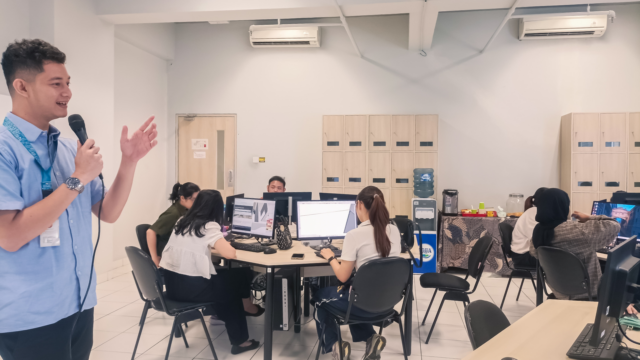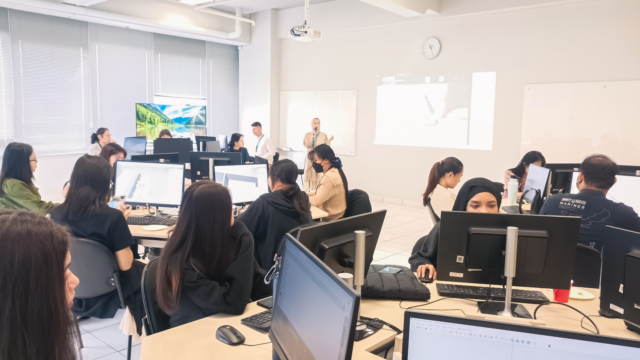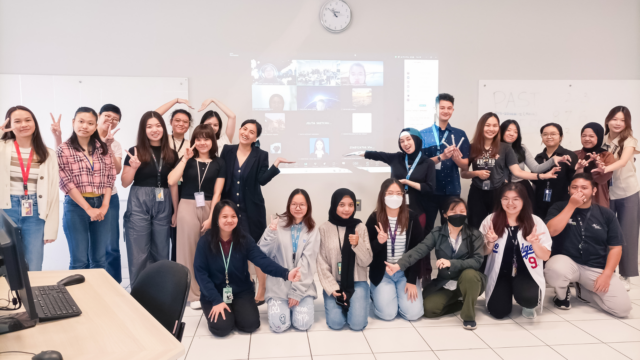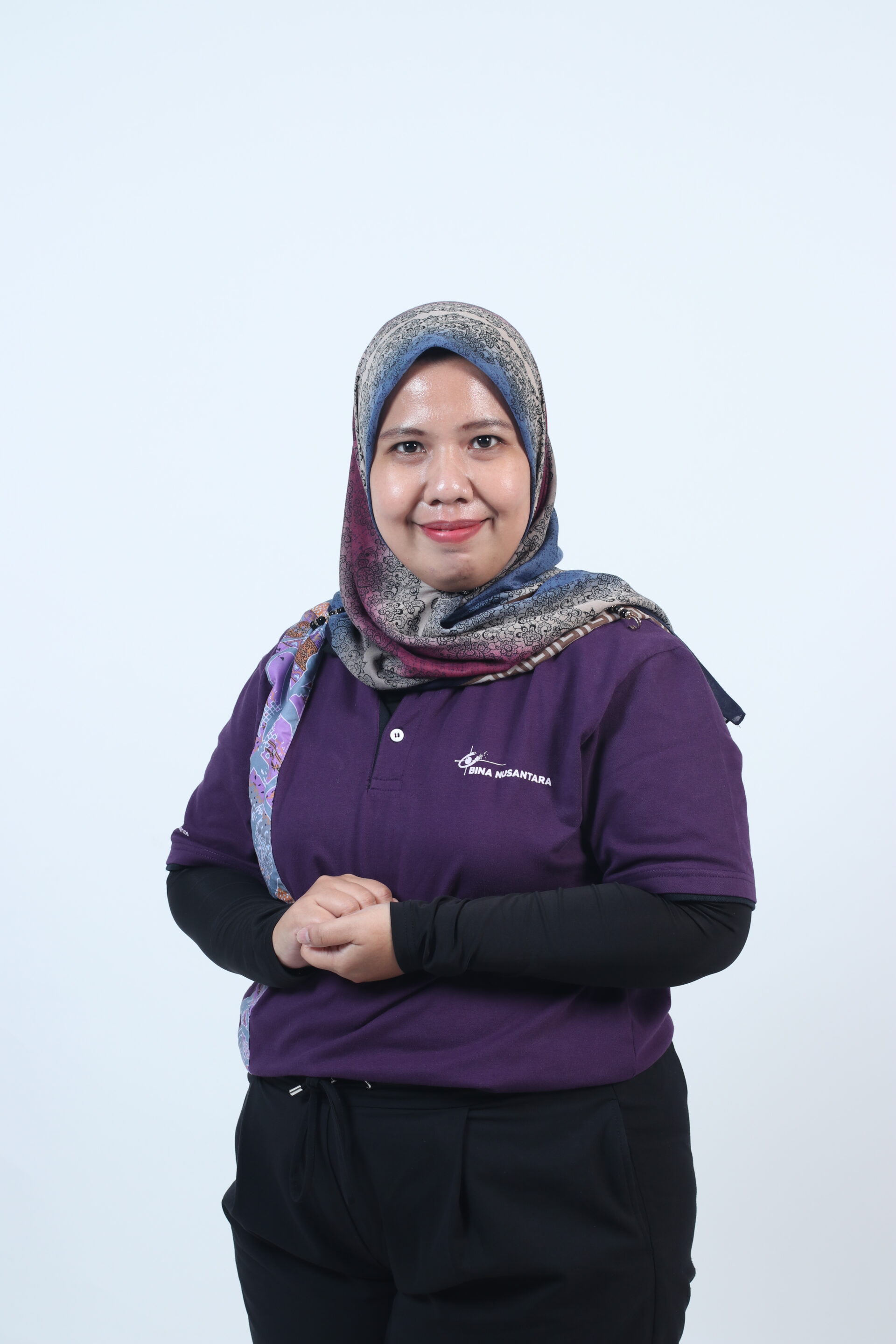Harnessing Creative and Critical Thinking Skills in Modern Design Learning
Bandung, 30 April—As the demand for creative professionals expands worldwide, it is important for aspiring university students to polish their creative skill set. In collaboraton with SketchUp Indonesia (“SketchUp”) since 2022, we have provided practical training for sharpens our students’ creative and critical thinking, problem-solving, and technical skills, which aligned with the demands of the creative industries.
(Photo Editor: Mufti Warits)
Delivered by four experienced SketchUp trainers specializing in architecture, interior design, and digital modeling, the sessions introduced students to key concepts in 3D modeling, explored features and layout functions, and delved deeper into the integration of virtual reality (VR) and augmented reality (AR).
This year, we once again held the training and certification programs at BINUS @Bandung from 24-26 April, attended by 60 interior design students.
(Photo Editor: Mufti Warits)
“The collaboration with SketchUp Indonesia in conducting training for our lecturers and students has been a highly valuable experience. It has significantly enriched our knowledge and strengthened our hard skills in 3D modelling, rendering, and drafting as key competencies in interior design,” said Friska Amalia, S.Ds., M.Ds., Deputy Head of Department of Interior Design, when outlining the program’s objectives.
Friska emphasized that our students have gained a deeper insight into the development and capabilities of this powerful software, which has empowered them to enhance their technical proficiency, enabling them to produce effective preliminary design documents and better prepare for global competitiveness as future designers.
(Photo Editor: Mufti Warits)
According to a study from Yu Shan Chang et al. (2022), VR technology facilitates a complete design thinking process, enabling learners to transition smoothly from empathy to problem identification, ideation, prototyping, and testing, enriching creative output from ideation to final verification. Thus, this training program is also designed to promote hands-on learning, facilitating student engagement in collaborative learning by forming groups and adopting distinct professional roles such as consultant, client, and studio manager. These role-play activities were created to mirror real industry scenarios, requiring effective teamwork and strategic thinking.
Lastly, the program concluded with a group presentation, and upon successful completion of the project and a formal written examination, students were awarded certification that bolsters their graduate attributes, preparing them for future careers in design, architecture, and related creative fields.
(Words by Mita Adhisti/Editor: Hamzah Ramadhan)







Comments :